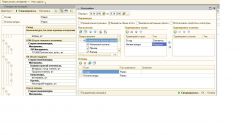Instruction
1
Form working capital statement on the accounts of synthetic accounting. It must contain a column with the account name and the three pairs of columns to calculate debit and credit for the initial balance, the turnover for the period and ending balance. Based on the data of the previous reporting period, make the debit and credit figures for the opening balance.
2
Determine the turnover for the reporting period. On the basis of accounting data enter the amounts of the debits and credits for each account. Verify that the amounts match with the primary documentation. Otherwise mistakes can lead to inaccuracies in the abandonment of the annual balance sheet.
3
Analyze the nature of the account for which you want to determine the ending balance. They are divided into active, passive and actively-passive. This must be done because the procedure for calculating the balance at the end of the reporting period, they have different.
4
Calculate the ending balances for active accounts. Income on these accounts is recorded on the debit side and the outflow – credit. When calculating the balance at the end of the month you need to debit initial debit balance to add and subtract momentum credit momentum. The result is the number of beds debit balance on an active account.
5
Calculate the ending balance for all accounts. Reflection of receipts and Disposals for it affects credit and debit, respectively. In this regard, at the end of the reporting period, the credit is calculated the ending balance that is equal to the initial amount of the credit balance and credit turnover less the debit turnover.
6
Determine the ending balance for an active-passive accounts who have both a credit and a debit side. To do this, first it is necessary to sum the initial debit balances and transactions and subtract them from the credit indices. If the resulting value is greater than zero, then it refers to debit the final balance, and if less, then the loan without minus.



